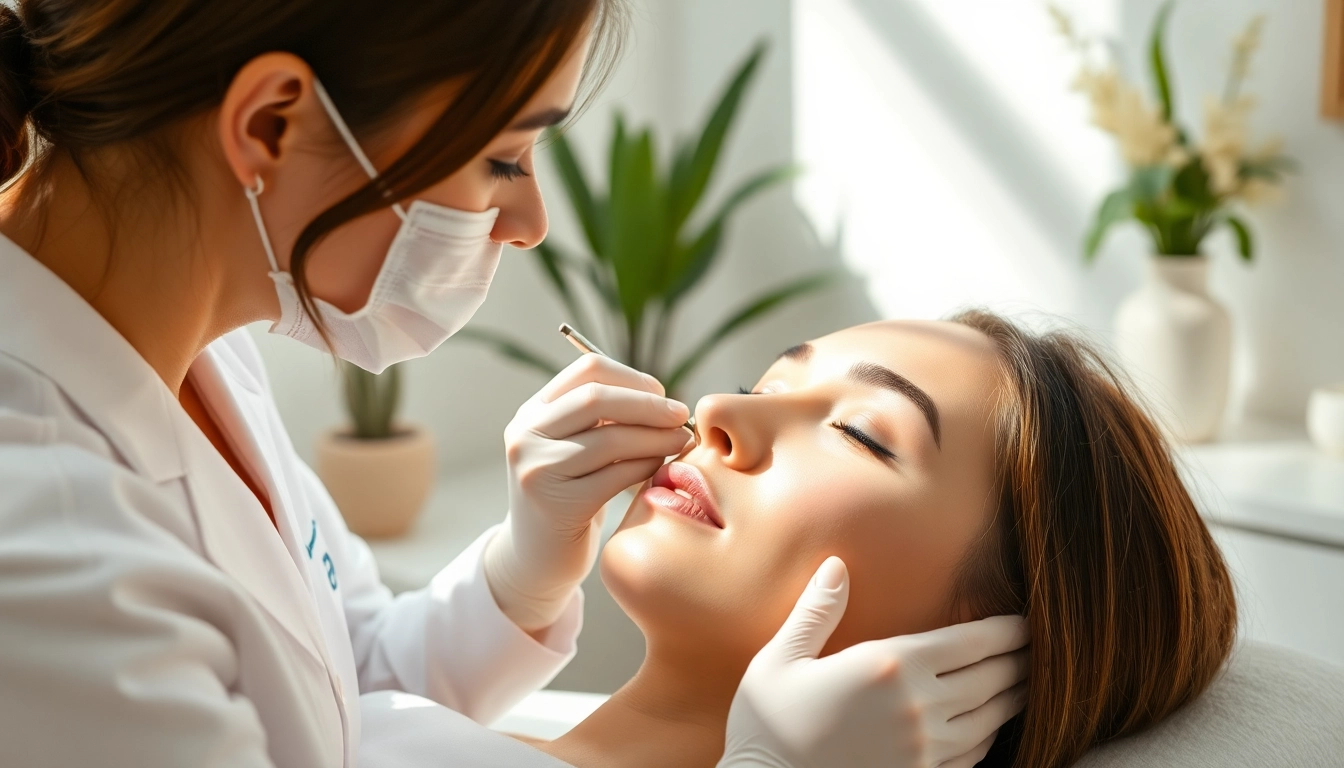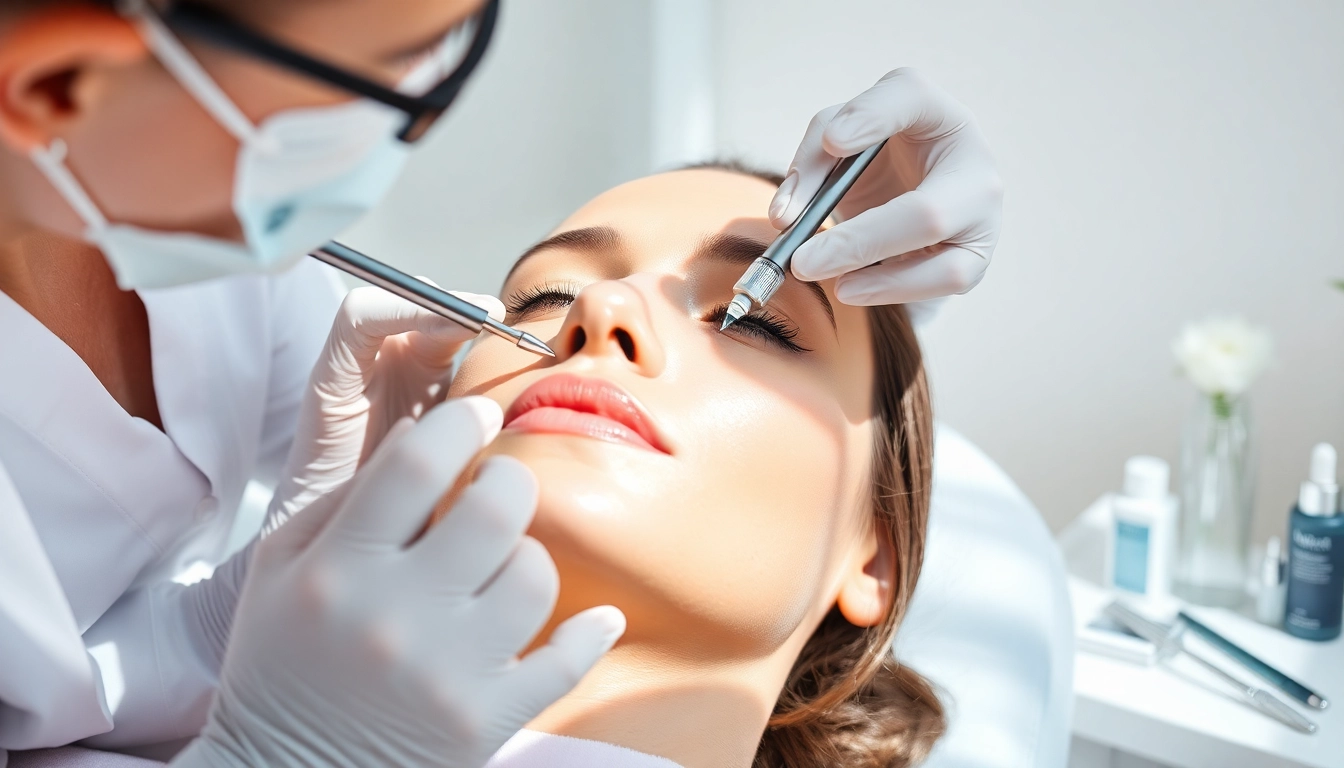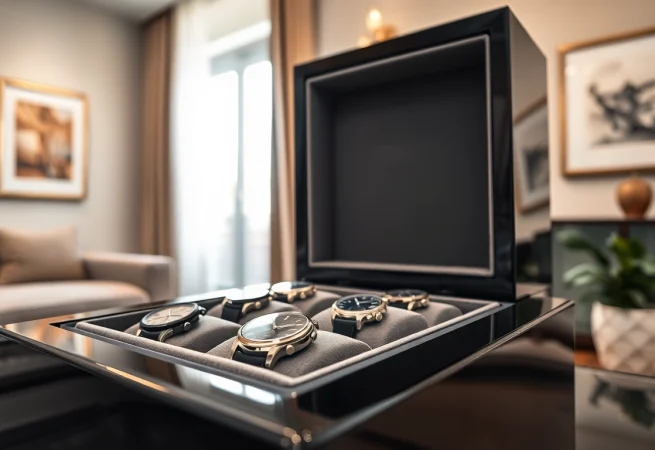

Effective Strategies for Healing Trauma and Reclaiming Your Life
Understanding Healing Trauma
Healing trauma is a vital process that requires a comprehensive understanding of its nature, sources, and impact on individuals. Trauma can stem from various experiences, affecting individuals profoundly and leading to long-term psychological effects. In this detailed exploration, we will delve into the definition of healing trauma, the common sources of trauma, and how it can influence mental health. This foundational knowledge is crucial for anyone on the journey towards recovery.
Defining Healing Trauma
At its core, healing trauma involves addressing and resolving the psychological and emotional distress caused by traumatic experiences. This process is not merely about moving on but engaging deeply with the feelings and memories associated with trauma. Healing trauma allows individuals to regain control over their lives and develop resilience against future adversities. By employing various therapeutic techniques and self-care strategies, individuals can rebuild their sense of self and reconnect with their emotional well-being. Understanding this process is the first step towards fostering a culture of healing and support.
Common Sources of Trauma
Trauma can manifest from a myriad of sources, each unique to the individual. Common sources of trauma include:
- Physical Abuse: Experiencing physical harm from another person can lead to deep-seated trauma.
- Emotional Abuse: Manipulative tactics or verbal assault can have lasting effects on mental health.
- Sexual Assault: Incidents of sexual violence often result in significant trauma that requires comprehensive healing strategies.
- Accidents: Sudden, life-altering events like car accidents can create trauma that pervades a person’s entire life.
- Natural Disasters: Events such as earthquakes, floods, or hurricanes can induce trauma through the loss of security and loved ones.
- Military Combat: Serving in war zones can expose individuals to experiences that lead to PTSD and other trauma-related disorders.
The impact of these sources varies, often influenced by individual circumstances, history, and support systems available to the affected person. Recognizing and validating these experiences are crucial steps in the path toward healing.
The Impact of Trauma on Mental Health
The effects of trauma on mental health can be profound and far-reaching. Individuals who have experienced trauma may struggle with conditions such as anxiety, depression, and PTSD (Post-Traumatic Stress Disorder). Symptoms may include:
- Intrusive Memories: Recurrent, unwanted thoughts about the traumatic event.
- Emotional Numbing: Difficulty expressing emotions or feeling disconnected from oneself or surroundings.
- Avoidance Behaviors: Steering clear of situations or conversations that remind the person of the trauma.
- Hyperarousal: Heightened state of anxiety leading to irritability, difficulty sleeping, and a persistent sense of danger.
Understanding these impacts allows for better-targeted approaches in healing trauma, tailor-fit to address the unique needs of those affected.
Key Approaches to Healing Trauma
As individuals work through the often complex process of healing, several approaches can provide crucial support and guidance. Below are some of the key methodologies to healing trauma that have proven effective in various contexts.
Therapeutic Techniques
Therapeutic interventions are central to healing trauma. Various forms of therapy can be deployed to facilitate the healing process:
- Cognitive Behavioral Therapy (CBT): This structured therapy helps individuals identify and alter negative thinking patterns associated with trauma.
- Eye Movement Desensitization and Reprocessing (EMDR): EMDR assists individuals in processing traumatic memories by utilizing guided eye movements to lessen the emotional charge of the memories.
- Somatic Experiencing: Focused on the body, this approach encourages individuals to experience their physical sensations and movements, which can unlock trauma stored in the body.
- Dialectical Behavior Therapy (DBT): This therapy is particularly effective for individuals with intense emotions, teaching skills in mindfulness, emotional regulation, and distress tolerance.
Choosing the appropriate therapy depends on individual preferences and the nature of the trauma, making it essential to consult with a mental health professional for personalized guidance.
Self-Care Practices for Healing Trauma
Self-care plays a pivotal role in the healing process. Simple yet effective practices can significantly influence mental health and emotional well-being:
- Physical Activity: Engaging in regular exercise releases endorphins, which can help alleviate symptoms of depression and anxiety.
- Mindfulness and Meditation: These practices can help individuals stay grounded and clear their minds of distressing thoughts linked to trauma.
- Proper Nutrition: Eating a balanced diet contributes to overall health and can impact mood stability.
- Sleep Hygiene: Establishing a consistent sleep routine can improve overall mental health and resilience.
- Creative Expression: Activities such as art, music, or journaling can provide a safe outlet for emotions tied to trauma, aiding in release and understanding.
Incorporating these self-care strategies into daily life can facilitate healing and boost resilience against future challenges.
Building a Support Network
No one should navigate the journey of healing trauma alone. Building a strong support network is essential in recovery:
- Friends and Family: Maintaining open communication with trusted individuals allows for emotional expression and support.
- Support Groups: Connecting with others who have had similar experiences can diminish feelings of isolation and stigma, fostering a sense of community.
- Professional Support: Working with therapists, counselors, or support groups specialized in trauma recovery can provide additional layers of support.
Encouragement and a sense of belonging from a supportive network can bolster the healing process, reminding individuals they are not alone in their struggles.
Mindfulness and Its Role in Healing Trauma
Mindfulness has emerged as a powerful tool in healing trauma. It allows individuals to stay present, making it easier to process traumatic experiences without becoming overwhelmed. This section will explore the different strategies and the benefits that mindfulness and meditation offer in the journey of healing.
Practicing Mindfulness Techniques
Mindfulness involves paying attention to the present moment without judgment. Practicing mindfulness entails incorporating techniques such as:
- Breath Awareness: Focusing on breath can ground individuals, helping to alleviate anxiety and stress linked to trauma.
- Body Scan: This technique involves systematically focusing on different body parts, increasing awareness and releasing tension associated with trauma.
- Mindful Walking: Walking with awareness to the sensations of the ground underfoot can help individuals feel more connected to their body and environment.
Regular practice of these techniques can cultivate resilience, emotional control, and a greater sense of peace.
Benefits of Meditation in Healing Trauma
Meditation complements mindfulness practices by providing structured techniques for relaxation and introspection. The benefits of incorporating meditation into trauma healing include:
- Reduced Anxiety and Stress: Meditation can help calm the nervous system, lessening the intensity of anxiety and stress responses.
- Emotional Regulation: Regular meditation practice encourages individuals to acknowledge and accept their emotions without reacting impulsively.
- Improved Focus and Clarity: Meditation sharpens concentration, aiding individuals in processing their thoughts and feelings related to trauma more effectively.
- Increased Self-Awareness: Taking time to reflect leads to a greater understanding of how trauma affects one’s life, paving the way for healing.
These benefits create a conducive environment for healing trauma, allowing individuals to cultivate a clearer understanding of their experiences.
Mind-Body Connection: Healing Through Awareness
The mind-body connection plays a critical role in healing trauma. By recognizing that emotional distress can manifest as physical symptoms, individuals can work towards holistic healing. Techniques that bridge this connection include:
- Yoga: Practicing yoga encourages physical movement and breathing, which can alleviate symptoms of trauma stored in the body.
- Art Therapy: Engaging in creative processes allows individuals to express emotions and thoughts they may find difficult to verbalize.
- Somatic Practices: These approaches focus on bodily sensations to unlock and process trauma stored within the body.
Through the mind-body connection, individuals can foster healing from trauma on both emotional and physical levels, leading to a more integrated recovery.
Stages of Trauma Recovery
The recovery from trauma is not a linear process; it consists of various stages that individuals may navigate differently. Understanding these stages can illuminate the path towards healing.
Understanding the Recovery Process
The recovery process typically unfolds in several key stages:
- Impact Stage: This initial phase is characterized by confusion and disorientation, where individuals are heavily affected by the trauma.
- Recoil Stage: Here, individuals confront the effects of trauma, experiencing a range of emotions including anger and sadness.
- Reconstruction Stage: In this phase, individuals begin to formulate a new sense of self, integrating the trauma experience into their life narrative.
- Integration Stage: Ultimately, individuals reach a level of acceptance and understanding of their experience, allowing them to move forward with their lives.
Recognizing these stages can help individuals and their support networks understand that recovery takes time and requires patience and self-compassion.
Overcoming Challenges in Healing Trauma
Healing trauma presents unique challenges, including:
- Fear of Vulnerability: Many individuals fear opening up about their trauma, as it requires exposing their deepest wounds.
- Stigma and Shame: Societal stigma surrounding trauma can lead to feelings of shame and isolation.
- Dissociation: Some may detach from their emotions or body as a defense mechanism, making it challenging to confront the trauma.
To overcome these challenges, individuals can engage in gradual exposure practices, build trust with supportive individuals, and access professional help when needed. Realizing that healing is a journey can foster resilience in the face of obstacles.
Recognizing Progress in Recovery
As individuals navigate through the various stages of recovery, recognizing and celebrating progress is vital:
- Emotional Awareness: Acknowledgment of emotions and how they relate to the trauma is a positive sign of progress.
- Increased Resilience: Signs of improved coping strategies indicate movement towards better emotional health.
- Open Communication: An ability to share feelings and thoughts about the traumatic experience signifies growth.
Encouragement and reinforcement from peers and professionals can enhance the sense of progress, promoting continued growth and healing.
Resources for Continued Support in Healing Trauma
As the journey of healing trauma unfolds, various resources can provide necessary support and education. Individuals are encouraged to incorporate these valuable materials into their healing process.
Books and Educational Materials
Reading literature on trauma can offer insights and personal anecdotes that facilitate understanding and growth in the healing experience. Key books include:
- Healing Trauma: A Pioneering Program for Restoring the Wisdom of Your Body by Peter Levine, which discusses how trauma impacts the body and how to unlock the healing process.
- The Body Keeps the Score by Bessel van der Kolk, which explores the profound impact of trauma on physical and mental health.
These resources can inform individuals about their experiences and offer practical techniques for healing.
Online Support Communities
Connecting with online support communities can empower individuals to share their experiences and advice, while also fostering a sense of belonging. These platforms can include forums, Facebook groups, and dedicated websites focused on trauma recovery.
Finding Professional Help
Professional support is instrumental in the healing process. Seeking out qualified mental health professionals specialized in trauma can lead to tailored treatment plans. Individuals are encouraged to explore various options such as therapy, counseling, and workshops that focus on trauma recovery. Utilizing resources such as therapist directories and local mental health services can help in finding the right support.
In conclusion, healing trauma is a complex journey encompassing various techniques, stages, and support networks. Understanding the intricacies of trauma and the multifaceted approaches available for healing can empower individuals towards recovery. By fostering resilience, building connections, and seeking knowledge, individuals can reclaim their lives and pave the way for a hopeful future.

Effective Strategies for Dealing with Grief: Finding Comfort and Connection
Understanding Grief and Its Impact
Defining Grief: What Is It?
Grief is a profound emotional response to loss, primarily associated with the death of a loved one. However, it can also be triggered by significant life changes, such as the end of a relationship, loss of a job, or even the loss of a cherished pet. This complex emotion encompasses a wide range of feelings, such as sadness, anger, confusion, and despair. Grief is not a linear process; it affects each individual differently and can vary greatly in intensity and duration.
Understanding the nature of grief is crucial for healing. As many resources suggest, one effective strategy for dealing with grief is to acknowledge these emotional experiences as normal reactions to loss, rather than suppressing them. This acknowledgement helps facilitate a healthy grieving process, allowing individuals to navigate their emotions and experience the healing that follows.
Common Symptoms and Reactions to Loss
Grief manifests in various ways, with symptoms that can be emotional, physical, and behavioral. Emotionally, individuals may experience profound sadness, anger, confusion, or even guilt. Physically, grief can lead to symptoms such as fatigue, headaches, and changes in appetite or sleep patterns. Behaviorally, one might withdraw from social interactions, exhibit restlessness, or focus excessively on the loss. Recognizing these symptoms is vital for both the grieving individual and their support network, as they can indicate the intensity and complexity of the grieving process.
The Stages of Grief: A Closer Look
One popular framework for understanding grief is David Kübler-Ross’s five stages: denial, anger, bargaining, depression, and acceptance. While not necessarily linear, these stages represent common emotional responses that many people experience when faced with loss.
- Denial: A defense mechanism that buffers the immediate shock of the loss, denying its finality.
- Anger: The response may be directed towards the deceased, oneself, others, or even the world.
- Bargaining: Individuals may find themselves negotiating for more time or looking for ways to turn back the clock.
- Depression: This stage is often marked by profound sadness, as the reality of the loss sets in.
- Acceptance: This final stage involves coming to terms with the loss, allowing individuals to move forward while still cherishing memories.
Understanding these stages can provide a framework for individuals going through grief, helping them recognize their experiences as part of a larger process of healing.
Healthy Ways to Cope with Grief
Affirming Your Emotions: Accepting Grief
One of the most constructive ways to cope with grief is to accept and validate the emotions that arise. Suppressing feelings can prolong the grieving process and lead to complicated grief. Allowing oneself to feel sad, angry, or confused is essential. Techniques such as journaling or talking to supportive friends can help articulate these emotions. Furthermore, engaging with grief support resources – whether books, articles, or professional counseling – can provide invaluable insights into the complexities of one’s feelings.
Finding Support: Connecting with Loved Ones
Isolation can exacerbate feelings of grief, making it crucial to seek support from loved ones. Sharing feelings and memories can provide comfort and remind individuals that they are not alone in their experience. Support groups, whether online or in-person, can also connect individuals who are facing similar challenges, fostering understanding and shared healing.
Connections with friends and family can help reinforce the bonds that exist despite the loss, providing emotional nourishment while working through grief.
Practicing Self-Care During the Grieving Process
In times of grief, self-care is often neglected. However, maintaining physical health is essential for managing emotional health. Regular exercise, a nutritious diet, and adequate sleep can greatly improve mood and energy levels. Engaging in mindfulness practices, such as yoga or meditation, can also reduce anxiety and help individuals stay grounded in the present moment.
Self-care should not be seen as a luxury but as an essential part of the grieving process. Establishing a routine that incorporates time for relaxation, hobbies, and social activities can be beneficial as individuals navigate their grief journey.
Overcoming Challenges While Dealing with Grief
Dealing with Complicated Grief
Complicated grief occurs when the grieving process becomes prolonged or remains unresolved, interfering significantly with daily life. Signs include persistent yearning for the deceased, intense sorrow, and difficulty engaging with life. Recognizing the difference between normal grief and complicated grief is crucial, as the latter may benefit from professional help. Therapeutic interventions, such as cognitive behavioral therapy (CBT) or prolonged exposure therapy, can provide relief and aid in processing emotions related to loss.
Recognizing When to Seek Professional Help
While many can navigate grief with the support of loved ones, others may require professional intervention. Signs that indicate the need for professional support include an inability to function in daily life, the emergence of anxiety or depression, or feelings of hopelessness. Seeking help is not a sign of weakness but a courageous step toward healing. Mental health professionals can provide individualized strategies and therapies tailored to one’s grieving process.
Addressing Stigma Around Grief in Society
In many cultures, there exists a stigma associated with grief where individuals feel pressured to “move on” quickly. This societal expectation can lead to feelings of isolation and guilt in those who are grieving. Addressing this stigma involves fostering open dialogues about grief and loss, normalizing the experience of grief and its duration. Creating safe spaces for conversations about loss can help individuals feel validated in their experiences and encourage healthier grieving practices within communities.
Practical Tools and Techniques for Grieving
Mindfulness and Meditation for Grief
Mindfulness practices, such as meditation and breathing exercises, can provide grounding during times of intense emotion. Engaging in mindfulness allows individuals to acknowledge their feelings without judgment, fostering a sense of calm and connection to the present. Guided meditation apps and online resources can help teach these techniques, making them accessible for individuals seeking solace during grief.
Creative Expressions: Journaling and Art Therapy
Creative outlets can serve as powerful tools for processing grief. Journaling is an effective method for expressing thoughts and feelings, allowing individuals to articulate their experiences and memories surrounding their loss. Similarly, art therapy provides a space for non-verbal expression, facilitating the exploration of emotions through various mediums, such as painting or sculpting. Both methods are beneficial for individuals who struggle to articulate their feelings verbally.
Participating in Support Groups and Workshops
Engaging in support groups or workshops can significantly enhance the grieving process. These settings provide opportunities for shared experiences and can help individuals feel less isolated in their grief. Participants can learn coping strategies from each other and receive guidance from facilitators. Many organizations offer grief support workshops, focusing on various aspects of coping, healing, and moving forward.
Moving Forward: Embracing Life After Loss
Creating New Memories While Honoring the Past
Moving forward after loss does not mean forgetting the loved ones who have passed. Finding ways to honor their memory while creating new experiences is critical for healing. This can include traditions that celebrate their life, such as commemorating birthdays or anniversaries in meaningful ways, or integrating activities once enjoyed together into one’s routine.
Making new memories helps reframe the narrative surrounding loss—from solely mourning what has been lost to cherishing what was shared.
Establishing New Routines and Connections
Establishing new routines can aid in the transition to life after loss. Whether it involves exploring new hobbies, volunteering, or forming new social connections, these activities can reinvigorate a sense of purpose and community. Creating a structure in daily life can also provide a sense of normalcy, helping individuals navigate their new reality.
Resilience: Growing Through Grief
Grief can indeed be a powerful catalyst for personal growth. Many individuals find that through processing their grief, they develop greater resilience, empathy, and a renewed appreciation for life. Embracing the lessons learned and the strength gained can empower individuals to face future challenges with a newfound perspective. Although the journey through grief may be wrought with difficulty, it can ultimately lead to a deeper understanding of oneself and one’s connections with others.

Understanding Attachment Theory Coaching: Building Stronger Relationships
The Basics of Attachment Theory Coaching
Attachment theory is a psychological framework that focuses on the ways in which humans connect with one another. It describes how these connections can influence our relationships and emotional well-being throughout our lives. For those seeking to improve their relationships, understanding attachment theory provides a roadmap for personal growth and meaningful connections. Coaching derived from this theory, particularly involving an attachment theory coach, can help individuals navigate the complexities of their attachment styles and enhance their relationship dynamics.
What is Attachment Theory?
Attachment theory was first introduced by psychologist John Bowlby in the mid-20th century. The central idea is that the bonds formed with primary caregivers in childhood shape an individual’s expectations and experiences in relationships throughout their life. Bowlby proposed that these attachment styles are critical for emotional development, influencing how people experience love, trust, and intimacy.
There are four primary attachment styles identified in adults:
- Secure Attachment: Individuals with this attachment style are comfortable with intimacy and independence, promoting healthy relationships.
- Anxious Attachment: Those with an anxious attachment style often seek validation and reassurance, fearing abandonment and displaying clingy behavior.
- Avoidant Attachment: People with avoidant attachment tend to distance themselves from partners, prioritizing self-sufficiency over closeness.
- Disorganized Attachment: This style is characterized by a mix of anxious and avoidant behaviors, often resulting from trauma in early relationships.
Importance of Attachment Styles in Relationships
Understanding your attachment style is crucial for fostering healthy relationships. Each style governs how individuals relate to their partners, express affection, and cope with conflict. For example, a secure attachment style typically leads to more satisfying and stable relationships, whereas an anxious or avoidant style can create barriers to intimacy and trust.
By recognizing one’s attachment style, individuals can gain insight into their reactions in relationships, ultimately paving the way to change and improvement. This knowledge is essential for anyone looking to transform unhealthy patterns and establish meaningful connections.
Overview of Coaching Approaches
Attachment theory coaching employs various approaches to facilitate personal growth and relationship improvement. Coaches may integrate different therapeutic modalities, including cognitive-behavioral therapy (CBT), mindfulness practices, and experiential exercises, to help clients explore their emotional landscapes.
The ultimate aim is to empower individuals to recognize their attachment patterns, challenge negative beliefs, and adopt healthier relational strategies. Coaches may facilitate this journey through one-on-one sessions, group workshops, or online programs tailored to the clients’ needs.
Identifying Your Attachment Style
Identifying your attachment style is the first step toward understanding how it influences your relationships. It requires introspection and a willingness to confront uncomfortable truths about your emotional responses and relational behaviors.
Types of Attachment Styles
As previously mentioned, the four primary attachment styles serve as a framework for identifying how individuals relate to others. Here’s a deeper dive into each style:
- Secure Attachment: These individuals often have positive self-esteem and confidence in the availability of their partners, leading to healthy and supportive relationships.
- Anxious Attachment: Characterized by a fear of abandonment, these individuals may exhibit behaviors such as constant texting or seeking reassurance, often stemming from unresolved childhood anxieties.
- Avoidant Attachment: These individuals value independence and are often uncomfortable with intimacy. They can be perceived as distant or emotionally unavailable.
- Disorganized Attachment: Often emerging in individuals with trauma backgrounds, this style can result in erratic behaviors, fearfulness towards closeness, and confusion in relational dynamics.
Recognizing Your Patterns
Recognizing attachment patterns involves careful self-examination. Reflect on past relationships, communication styles, and emotional reactions. Key questions may include:
- How do I respond during conflicts?
- What are my fears regarding intimacy and closeness?
- Do I seek constant validation from my partner?
Journaling can be an effective tool for tracking these emotions and behaviors over time, allowing for deeper insights into underlying attachment styles.
How Attachment Affects Relationships
Attachment styles have profound implications for relationship dynamics. For example, a securely attached person may inadvertently overwhelm an anxiously attached partner’s needs for reassurance, while an avoidant individual may struggle to understand the anxious partner’s need for closeness. Recognizing these patterns can facilitate better communication and empathy in partnerships.
Understanding how attachment styles play out in everyday interactions can reveal triggers and lead to healthier responses among partners.
The Role of an Attachment Theory Coach
An attachment theory coach serves as a guide in helping individuals understand and navigate their relational patterns. These coaches employ various techniques and strategies tailored to the unique needs of their clients.
What to Expect from Coaching Sessions
Coaching sessions often begin with a thorough assessment of an individual’s attachment style and relationship history. The coach may utilize questionnaires, personal reflections, and discussions to establish a comprehensive understanding of the client’s relationship landscape.
From there, clients can expect tailored goal setting, with a focus on improving self-awareness, emotional regulation, and communication skills. Coaches may assign exercises or homework designed to reinforce lessons discussed during sessions.
Skills and Techniques Used by Coaches
Attachment theory coaches employ a variety of skills and techniques, including:
- Active Listening: Fostering an environment where clients feel heard and understood.
- Empathetic Inquiry: Encouraging clients to explore their feelings and behaviors without judgment.
- Cognitive Restructuring: Helping clients challenge negative thought patterns associated with their attachment styles.
- Role-Playing: Simulating scenarios that may arise in relationships to practice new communication strategies.
Identifying Goals and Measuring Progress
Setting clear goals is essential in the coaching process. An effective coach will help clients identify what deep-seated changes they want to achieve, whether that is becoming more secure in relationships or learning to communicate effectively. Progress can be measured through self-assessments, feedback from partners, and observable changes in behavior over time.
Common Challenges in Attachment Coaching
While attachment coaching can be transformative, it also presents challenges. Clients may face obstacles as they confront difficult emotions, ingrained behaviors, and the fear of vulnerability.
Dealing with Anxious Attachment
Anxious attachment can lead to relationship turmoil, characterized by heightened sensitivity to perceived rejection. Coaches often help clients challenge the fear-based beliefs that fuel this pattern, encouraging them to develop self-soothing techniques and fostering self-acceptance.
Techniques like mindfulness meditation and journaling can empower individuals to understand their emotional triggers and cultivate emotional resilience.
Overcoming Avoidant Tendencies
Overcoming avoidance behaviors can be particularly challenging, as those with this attachment style often fear dependency and emotional closeness. Coaches assist clients in recognizing the roots of their avoidance, guiding them to gradually face their discomfort with intimacy.
Implementing gradual exposure to vulnerability—whether through open discussions about feelings or small acts of intimacy—can help ease the transition toward more fulfilling relationships.
Addressing Mixed Attachment Styles
Many individuals exhibit mixed attachment styles, presenting unique challenges in relationships. A coach can support clients in recognizing these patterns and understanding how to adapt their behaviors to address the needs of both themselves and their partners.
Strategies may include building a solid foundation of self-awareness, increasing emotional regulation skills, and fostering open communication with partners about needs and anxieties.
Building Healthier Relationships through Coaching
Ultimately, the goal of attachment theory coaching is to equip individuals with the tools they need to build lasting and fulfilling relationships. This involves acquiring new skills, understanding oneself deeply, and learning to collaborate with partners towards common goals.
Successful Strategies for Change
Successful change requires a willingness to engage in the process continually. Here are some effective strategies:
- Practice Self-Reflection: Regularly evaluate your feelings, triggers, and responses in relationships to gain deeper insights.
- Communicate Openly: Foster a culture of honest communication within relationships. Vocalize needs and concerns to create a supportive atmosphere.
- Engage in Role Reversal: Attempting to see situations from your partner’s perspective can foster empathy and understanding.
- Pursue Self-Care: Prioritizing self-care and emotional health can improve overall well-being and prepare you for healthier interactions.
Communicating Effectively with Partners
Effective communication is vital for any relationship. Coaches often work with clients to develop specific communication strategies tailored to their unique styles. Some techniques include:
- Use ‘I’ Statements: This helps express personal feelings without assigning blame, e.g., “I feel anxious when we don’t talk for a while.”
- Nonverbal Communication: Awareness of body language, eye contact, and tone can enhance connections and convey care.
- Practice Active Listening: Make sure to genuinely listen to your partner, validating their feelings and encouraging a two-way dialogue.
Continual Growth and Self-Improvement
Personal growth is an ongoing journey. As individuals gain insights into their attachment styles and apply the lessons learned, it’s essential to embrace a mindset of continual improvement. Setting periodic goals, reflecting on progress, and being open to feedback can fuel sustained growth. Regularly checking in with oneself and seeking coaching support helps maintain motivational momentum towards building deep, healthy, and secure relationships.

Find Quality PDO Threads Near Me: A Complete Guide to Effective Treatments
Understanding PDO Threads: What They Are and How They Work
What Are PDO Threads?
PDO threads, or polydioxanone threads, are a type of absorbable sutures used in various medical and aesthetic applications. Originally utilized in cardiac and orthopedic surgeries, these threads have recently gained popularity in non-surgical aesthetic procedures aimed at rejuvenating the face and body. PDO threads are designed to lift and tighten the skin tissues, providing a refreshed appearance without the need for invasive surgical techniques.
These threads are biocompatible, meaning they are well tolerated by the human body. Over time, they facilitate collagen stimulation, which contributes to healthier and more youthful-looking skin. Given the surge in interest around aesthetic treatments, finding pdo threads near me can offer significant benefits for individuals looking to enhance their appearance.
Mechanism of Action: How PDO Threads Lift and Tighten
The mechanism by which PDO threads lift and tighten the skin lies in their unique design and the biological processes they stimulate. When PDO threads are inserted into the skin via a fine needle, they create a “scaffold” for the skin. This scaffold not only provides immediate lifting effects but also promotes long-term skin rejuvenation through collagen production.
- Immediate Lift: The threads create a lifting effect as soon as they are placed under the skin, offering instant results.
- Collagen Production: Over the months following the procedure, the body absorbs the threads, encouraging the development of new collagen, elastin, and hyaluronic acid in the treated area.
- Biocompatibility: As PDO threads dissolve naturally within 6-8 months, their safety profile further enhances their demand among aesthetic practitioners.
Benefits of Choosing PDO Threads for Aesthetic Treatments
There are numerous advantages to opting for PDO threads in aesthetic treatments:
- Non-Invasive: Unlike traditional facelifts, PDO threads require no major incisions, minimizing scarring and discomfort.
- Customizable Results: Practitioners can tailor PDO thread placement to meet individual aesthetic goals, allowing for a customized approach to lifting and rejuvenation.
- Reduced Downtime: Most patients experience minimal downtime compared to surgical facelifts, with many returning to their daily activities almost immediately after the procedure.
- Long-Lasting Effects: As the body continues to produce collagen over time, the aesthetic improvements can last for up to two years.
Benefits of PDO Thread Lifts Compared to Traditional Facelifts
Non-Invasive Nature of PDO Threads
One of the most significant advantages of PDO thread lifts is their non-invasive nature. Traditional facelifts often involve substantial surgical intervention, leading to extensive recovery periods. In contrast, PDO threads can be administered with local anesthesia, allowing for a much less traumatic experience for the patient.
This non-invasive approach significantly reduces the risks associated with surgery, such as bleeding, anesthesia complications, and prolonged swelling or bruising. Many patients report feeling only minor discomfort during the PDO thread lift procedure.
Recovery Time and Results: What to Expect
Recovery times for PDO thread lifts are remarkably shorter compared to traditional facelift surgery. Most patients can return to their typical routines within a few days, though some swelling or tenderness may persist for about a week. The immediate results from the lifting effect can be observed right after the procedure, while the enhancement through collagen production becomes progressively noticeable as healing occurs.
Patients can usually expect to see full results within three months after treatment. These outcomes continue to improve over time, maximizing the benefits of the initial procedure.
Cost-Effectiveness of PDO Threads Near Me
In terms of financial considerations, PDO thread lifts are often more cost-effective than traditional facelifts. The pricing can vary depending on the provider’s experience, geographic location, and the number of threads used during the treatment. While traditional surgery can range from $7,000 to $15,000 or more, PDO thread lifts generally range from $1,500 to $4,000.
Considering the non-invasive convenience and lower price point, many individuals who are hesitant about undergoing surgical procedures lean toward PDO thread lifts as a viable alternative.
Choosing the Right Providers: Finding PDO Threads Near Me
Key Qualifications to Look For in Providers
Choosing the right provider for PDO thread lifts is pivotal for achieving the desired results. Here are essential qualifications to consider:
- Credentials: Ensure that the provider is a licensed medical professional, preferably a board-certified dermatologist or plastic surgeon.
- Experience and Specialization: Look for providers who have specific training and extensive experience in using PDO threads. Ask about the number of procedures they have conducted.
- Before-and-After Photos: Review the provider’s portfolio of previous patients to gauge their skill level and the results they can typically achieve.
Questions to Ask During Your Consultation
Prior to undergoing PDO thread treatment, engage in a thorough consultation and ask thoughtful questions, such as:
- What type of PDO threads do you use, and why?
- Can you explain the procedure step-by-step?
- What are the potential risks and side effects?
- How do you tailor the treatment to individual patient needs?
- What is the expected longevity of the results for your specific case?
Reading Reviews and Checking Credentials
Patient reviews can provide invaluable insight into the experiences of others with a particular provider. Online platforms, social media, and dedicated review websites are excellent resources for gathering information. Pay attention to common themes in reviews, such as the quality of care, the environment of the practice, and the professionalism of the staff.
In addition, verifying the credentials and certifications of prospective providers can ensure you receive quality care. Look for affiliations with reputable medical organizations or boards that signify advanced training in aesthetic procedures.
PDO Threads Aftercare: Best Practices for Optimal Results
Immediate Post-Procedure Care Tips
Following your PDO thread lift, adhering to proper aftercare practices is crucial for optimizing results and minimizing complications. Here are post-procedure care tips:
- Ice Packs: Apply ice packs to the treated area to reduce swelling and discomfort.
- Avoid Touching: Refrain from touching or applying makeup to the treated area for at least 24 hours.
- Minimize Movement: Avoid strenuous physical activity for a few days to prevent unnecessary stress on the threads.
- Head Positioning: Sleep on your back with your head elevated for the first few nights to reduce swelling.
Signs of Complications and When to Seek Help
While PDO thread lifts generally have minimal risks, it’s essential to be aware of any signs of complications. Symptoms may include:
- Severe pain or discomfort that escalates rather than diminishes.
- Unusual or persistent swelling that does not subside over several days.
- Infection signs, such as fever or drainage from the injection sites.
- Visible or palpable threads at the surface of the skin.
If any of these symptoms arise, it is crucial to contact your provider immediately for evaluation and management.
Long-Term Care for Sustaining Results
To maximize the longevity of your PDO thread lift results, consider integrating some of the following long-term care practices:
- Skincare Routine: Adopt a consistent skincare routine that includes hydrating serums, moisturizers, and sun protection to maintain skin health.
- Hydration: Stay hydrated as this impacts your skin’s elasticity and overall appearance.
- Periodic Maintenance: Schedule regular follow-up visits with your provider to assess the condition of your skin and consider additional treatments as needed.
Trends in PDO Thread Treatments: What’s New?
Latest Techniques and Innovations in Thread Lifting
The field of aesthetic medicine is constantly evolving, and PDO thread treatments are no exception. New techniques are emerging to enhance the efficacy of thread lifts, including:
- Screw Threads: These are designed to create volume in addition to lifting, offering a more pronounced change in contours.
- Combination Treatments: Integrating PDO thread lifts with other procedures like dermal fillers for enhanced results are becoming increasingly popular.
- Advanced Injection Techniques: Practitioners are using more innovative placement methods to ensure even more natural outcomes.
Integrating PDO Threads with Other Aesthetic Treatments
Many practitioners are now exploring synergistic approaches by combining PDO threads with various aesthetic treatments. This includes:
- Dermal Fillers: Using fillers alongside PDO threads can enhance volume and contour to achieve a more youthful look.
- Botox: Administering Botox in conjunction with PDO threads can target fine lines and wrinkles, providing a comprehensive rejuvenation.
- Laser Treatments: By incorporating laser therapies, providers can improve skin texture and pigmentation following a thread lift.
Future of PDO Threads in Aesthetic Medicine
The future of PDO threads in aesthetic treatments is promising, with continuous advancements in technology and techniques. Researchers and practitioners are focused on developing:
- New Thread Materials: Innovations in thread composition may lead to enhanced lifting capacity and longevity of results.
- Greater Customization: Advancements may allow for more individualized treatments based on unique patient needs.
- Wider Acceptance: As awareness and understanding of PDO threads expand, they may become even more accepted in mainstream aesthetic practices.
As the demand for non-invasive aesthetic treatments grows, PDO threads are set to play a significant role in enhancing the overall quality of aesthetic medicine, providing safe and effective solutions for individuals seeking to achieve a youthful appearance.

The Benefits and Insights of Jaw Botox Treatment for a Defined Look
Understanding Jaw Botox: What You Need to Know
As cosmetic procedures continue to evolve, jaw botox has emerged as a popular treatment option for individuals looking to enhance their facial aesthetics and address functional concerns. This minimally invasive procedure offers various benefits beyond aesthetic enhancement, attracting attention from those seeking relief from dental issues, jaw tension, and a more defined facial contour. In this comprehensive guide, we will explore what jaw Botox is, how it works, the benefits it provides, and important considerations to keep in mind before opting for this treatment.
What Is Jaw Botox?
Jaw Botox refers to the injection of botulinum toxin type A into the masseter muscles, which are responsible for chewing and clenching the jaw. Primarily known for its cosmetic applications in reducing wrinkles, Botox has been found to be quite effective in relaxing hyperactive muscles in the jaw, leading to a range of improvements in both appearance and function.
Typically, this procedure is performed in an outpatient setting and involves minimal downtime, making it an attractive option for individuals looking for quick and effective results in their cosmetic journey. Whether it’s to enhance jawline definition or relieve discomfort caused by teeth grinding, jaw Botox presents a versatile solution.
How Does Jaw Botox Work?
Botox works by blocking the release of acetylcholine, a neurotransmitter responsible for muscle contraction. When injected into the masseter muscle, it temporarily weakens the muscle’s ability to contract, resulting in reduced muscle size and tension. This reduction can lead to a more sculpted jawline appearance and alleviation of symptoms related to teeth grinding or jaw clenching.
The procedure typically follows these steps:
- Consultation: A licensed healthcare provider assesses your needs and medical history.
- Preparation: The area is cleaned, and any necessary topical anesthetics are applied to minimize discomfort.
- Injection: Using a fine needle, the provider injects a predetermined amount of Botox into specific points in the masseter muscle.
- Post-Procedure Care: Patients are advised on how to care for the injection sites and what to expect in the following days.
Common Myths and Facts About Jaw Botox
Several myths circulate regarding jaw Botox that can perpetuate misunderstanding. Here are a few common myths, debunked:
- Myth: Jaw Botox is only for cosmetic improvement.
Fact: While jaw Botox does enhance facial contours, it is also effective for medical issues like bruxism (teeth grinding) and TMJ (temporomandibular joint disorder). - Myth: Jaw Botox changes the shape of your face permanently.
Fact: The effects of jaw Botox are temporary, typically lasting 4-6 months, after which the muscle’s activity returns to normal. - Myth: The procedure is painful and has a long recovery time.
Fact: Most patients report minimal discomfort during the procedure, and recovery time is typically quick, allowing for a return to regular activities almost immediately.
Benefits of Jaw Botox: More Than Just Aesthetics
Jaw Botox offers a range of benefits beyond simply enhancing the jawline. Below are some of the primary advantages of undergoing this treatment:
Improving Facial Contours
One of the most notable benefits of jaw Botox is its ability to improve facial contours. By relaxing overdeveloped masseter muscles, jaw Botox can create a slimmer and more sculpted jawline, contributing to an overall balanced facial aesthetic. This can be particularly appealing for individuals who feel their jawline is too broad or masculine, leading them to seek a more refined look.
Reducing Jaw Clenching and Discomfort
For many individuals, jaw clenching and teeth grinding—often related to stress or anxiety—can lead to discomfort, headaches, and even dental issues over time. Jaw Botox can effectively alleviate these symptoms by relaxing the masseter muscles, providing relief and improving overall quality of life. Many patients report significant reductions in tension and pain following treatment, allowing them to enjoy their daily activities without discomfort.
Boosting Confidence and Self-Esteem
Increasingly, cosmetic procedures are being recognized not only for their physical benefits but also for their mental and emotional impacts. Many patients who seek jaw Botox treatment express feelings of increased confidence and elevated self-esteem after experiencing improved facial aesthetics and reduced discomfort. Feeling good about one’s appearance can have far-reaching implications, positively affecting both personal and professional interactions.
Risks and Considerations of Jaw Botox
While jaw Botox can provide numerous benefits, it is essential to consider potential risks and determine whether you are an ideal candidate for the treatment. Below are key points to keep in mind:
Potential Side Effects
Understanding the potential side effects of jaw Botox is crucial for informed decision-making. Some common side effects include:
- Bruising and swelling at the injection site
- Headaches or flu-like symptoms
- Mild pain or discomfort
- Asymmetry or uneven results, which can occur if the treatment is not administered accurately
Most side effects are temporary and typically resolve within a few days. However, it is essential to discuss any concerns with your provider during the consultation phase.
Who Is an Ideal Candidate?
Not everyone is a suitable candidate for jaw Botox. Ideal candidates typically include:
- Adults seeking improvement in jawline aesthetics or relief from jaw-related discomfort
- Individuals with excess muscle activity in the masseter muscle
- Those without a history of allergies or adverse reactions to Botox
- Individuals without existing medical conditions that could contraindicate treatment
Consulting with a qualified practitioner is essential to ensure you meet the criteria for safe treatment.
Consultation and Medical History Importance
Before proceeding with jaw Botox, a thorough consultation is crucial. This includes a comprehensive review of your medical history, discussing any allergies, medications, and overall health status. The practitioner will assess your goals and expectations, helping you to understand what can realistically be achieved through treatment. This collaborative approach helps to ensure optimal outcomes and patient satisfaction.
Jaw Botox Procedure: What to Expect
Understanding the jaw Botox procedure helps demystify the treatment and sets appropriate expectations. Here is what to expect during and after your appointment:
Step-by-Step Treatment Overview
The jaw Botox treatment process, when performed by a licensed professional, is straightforward:
- Initial Consultation: Discuss your concerns and desired outcomes with the practitioner.
- Preparation: The injection sites are marked, and a topical anesthetic may be applied.
- Injection: Botox is injected using a fine needle into precise locations on the masseter muscle.
- Post-Treatment Instructions: Guidance is provided on post-treatment care and what to expect in the following days.
Post-Treatment Care Guidelines
Taking care of your face after jaw Botox is vital to ensure optimal healing and results. Here are some important post-treatment care guidelines:
- Avoid vigorous exercise and activities that may put pressure on the jaw for at least 24 hours.
- Do not massage the treated area for at least a few days to prevent spreading the Botox to unintended muscles.
- Stay hydrated and maintain a healthy diet to support the healing process shortly after the procedure.
- Follow up with your provider if you experience any unusual side effects or concerns.
Managing Expectations and Results
Results from jaw Botox may take a few days to manifest, often peaking around two weeks post-treatment. Patients should anticipate a gradual reduction in muscle bulk and clenching ability, leading to a more defined jawline and noticeable relief from discomfort. However, it is essential to manage expectations as results can vary from patient to patient based on factors such as treatment location, muscle condition, and individual response to Botox.
Comparing Jaw Botox to Other Jaw Enhancement Techniques
With various options available for jaw enhancement, understanding how jaw Botox compares to other techniques is vital for making informed decisions. Below are comparisons with other common treatments:
Jaw Botox vs. Dermal Fillers
While jaw Botox primarily works by reducing muscle mass and tension, dermal fillers serve a different purpose. Fillers can enhance volume in specific facial areas, creating a more defined jawline by adding structure and contour. In essence, Botox relaxes existing muscle bulk, while fillers can add volume and shape. Many individuals choose to combine both treatments for optimal results; however, the approach depends on individual goals.
Surgical Options vs. Botox
Surgical options for jaw enhancement, such as jaw reduction surgery, present a more permanent solution compared to the temporary effects of jaw Botox. While surgery can yield more dramatic alterations, it carries increased risks, more significant recovery time, and higher costs. On the other hand, jaw Botox is less invasive, requiring only a short appointment with limited downtime. Individuals who prefer gradual change or are unsure about permanent alterations often lean toward Botox as a preferable option.
Choosing the Right Option for You
Your decision to pursue jaw enhancement should be based on a thorough understanding of your aesthetic goals, budget, and willingness to undergo surgical intervention. Consulting with a qualified healthcare provider can help you navigate your options, assess the pros and cons, and establish a personalized treatment plan that aligns with your desires. Comprehensive discussions regarding budget considerations, time involved, and recovery can lead to informed choices that ensure satisfaction with your decision.
Conclusion
Jaw Botox represents a versatile treatment option for those seeking improvement in both appearance and jaw function. By understanding the intricacies of the procedure—including the benefits, risks, and comparisons with alternative treatments—individuals can make informed decisions that align with their needs and goals. As always, consultations with qualified practitioners play a crucial role in ensuring the best outcome and satisfaction with cosmetic procedures. Whether you are seeking an aesthetically pleasing jawline or relief from dental discomfort, jaw Botox could be a pathway to achieving those aspirations.

Comprehensive Guide to Health Care support Service: Enhancing Patient Care and Support
Understanding Health Care support Service
Health care is a vital component of society, serving as a cornerstone for individual well-being and public health. With the growing complexities in health care systems, Health Care support Service has emerged as an essential element that streamlines patient care, ensuring consistent and high-quality services are delivered. This article delves into the intricacies of health care support services, exploring what it entails, its key benefits, and who stands to gain from its implementation.
What is Health Care support Service?
Health Care support Service encompasses a variety of services designed to assist individuals in navigating the complexities of health care. This can include assistance with medical tasks, care coordination, and direct patient care by qualified professionals. The primary aim of these services is to enhance patient experience, improve health outcomes, and reduce the burden on primary health care providers.
These services can range from in-home health support, telehealth services, to administrative support within health care facilities. By providing these multifaceted services, health care support aims to bridge the gap between patients’ needs and the available resources, ensuring that every individual has access to the assistance they require for optimal health management.
Key Benefits of Health Care support Service
The introduction of health care support services presents numerous advantages for both patients and healthcare providers. Here are some key benefits:
- Improved Patient Outcomes: Tailored support often leads to enhanced treatment adherence and better health results as patients receive personalized attention and care.
- Enhanced Care Coordination: Health Care support Service integrates the efforts of various health professionals, creating a coherent strategy for patient care that minimizes fragmented services.
- Cost Efficiency: By preventing complications and reducing hospital admissions, these services can lead to significant cost savings for both individuals and the health care system.
- Access to Skilled Professionals: Patients gain access to a range of healthcare specialists, ensuring that their diverse needs are met by trained professionals.
- Patient Empowerment: Through education and support, patients become more engaged in their own healthcare decisions, leading to improved overall satisfaction and health literacy.
Who Can Benefit from Health Care support Service?
The spectrum of beneficiaries for Health Care support Service is extensive. It primarily serves:
- Patients with Chronic Illnesses: Individuals managing chronic conditions benefit significantly from ongoing support and education about their health.
- Elderly Individuals: Older adults often require assistance in managing their health, and health care support services play a crucial role in facilitating their independence.
- Disabled Patients: Those with disabilities rely on tailored services to ensure their unique health care needs are fully addressed.
- Caregivers: Family members and friends caring for loved ones can greatly benefit from resources and support systems that reduce their burden and enhance care quality.
Core Components of Effective Health Care support Service
To maximize the effectiveness of Health Care support Service, several core components must be precisely integrated into practice.
Personalized Care Plans
Personalized care plans are a fundamental element of health care support services. These plans are developed collaboratively between healthcare providers and patients, taking into account individual health needs, preferences, and lifestyle choices. They encompass a holistic view of the patient’s health status, detailing treatment protocols, medication schedules, and follow-up appointments.
Research indicates that personalized care can substantially enhance patient engagement and adherence to treatment, as individuals feel their unique circumstances are understood and considered in their care plan. Regular reviews and adjustments to these plans are essential in responding to changes in patient health or circumstances.
Medication Management Strategies
Managing medications effectively is crucial to achieving positive health outcomes. Health Care support Services often involve medication management strategies that include educating patients about their medications, coordinating refills, and monitoring potential side effects.
For example, the implementation of medication reconciliation processes—where a patient’s medication list is thoroughly reviewed and verified—can substantially reduce the risks of adverse drug interactions and enhance safety. Support services can also employ technological solutions, such as reminder apps or pill organizers, to ensure patients take their medications as prescribed.
Skilled Nursing and Rehabilitation
Providing skilled nursing care and rehabilitation services is a key component of health care support, particularly for patients recovering from surgical procedures or managing complex health conditions. Skilled nursing professionals offer direct patient care, which may include wound care, administering injections, and performing diagnostic tests. Rehabilitation services, on the other hand, focus on improving patients’ physical and functional abilities through tailored exercises and support.
Integrating these services into health care support can dramatically improve recovery times and overall patient satisfaction. For instance, early mobilization and rehabilitative exercises post-surgery have been shown to lower complication rates and enhance the speed of recovery.
Implementing Health Care support Service in Your Practice
Successfully integrating Health Care support Service into any health care practice involves a structured approach that prioritizes patient needs and utilizes available resources effectively.
Identifying Patient Needs
Assessing patient needs is the first step toward effective implementation of health care support services. This involves collecting comprehensive health information through surveys, clinical assessments, and direct feedback sessions. Understanding each patient’s unique circumstances, preferences, and challenges is critical to delivering personalized care.
Health care practitioners can utilize standardized tools such as assessments and screenings to systematically identify the needs of different patient populations, ensuring that the support provided is both relevant and effective.
Training Staff for Enhanced Support
Continuous training and development of healthcare staff are essential components in the successful implementation of Health Care support Service. Providers should prioritize equipping their teams with the necessary skills and knowledge to effectively deliver the range of support services required.
This training should include topics such as communication skills, care coordination techniques, cultural competency, and technological tools used in telehealth and remote patient monitoring. By fostering an environment of learning and adaptability, health care practices can enhance their ability to meet the diverse needs of patients efficiently.
Utilizing Technology for Better Outcomes
The integration of technology into Health Care support Service can significantly enhance patient engagement and care delivery. Solutions such as electronic health records (EHR) and telehealth platforms enable seamless communication between patients and providers, reduce wait times, and improve access to care.
Moreover, data analytics can be employed to track patient outcomes and satisfaction effectively, helping identify areas for improvement and strategize solutions. Tools such as mobile health applications can also empower patients by providing them with easy access to information, appointment scheduling, and medication reminders.
Challenges in Delivering Health Care support Service
While the benefits of Health Care support Service are profound, several challenges can arise during its delivery, requiring thoughtful strategies to overcome.
Addressing Staffing Shortages
Staffing shortages represent one of the most significant challenges in the implementation of health care support services. The increasing demand for personalized care often outpaces the available workforce, leading to elevated stress levels among existing staff and potential burnout. This ultimately impacts the quality of care provided.
To address this issue, health care organizations should focus on enhancing recruitment strategies, offering competitive compensation packages, and providing robust training programs that equip staff with the skills necessary to excel in a support role. Collaborating with educational institutions to create pipelines for new talent can also be effective.
Ensuring Quality of Care
Maintaining a high standard of care while scaling support services can pose challenges. Inadequate oversight or inconsistencies in care delivery may lead to diminished outcomes.
Implementing standardized protocols, regular audits, and performance evaluations can assist health care facilities in ensuring consistent care quality. Furthermore, fostering a culture of accountability and patient-centeredness can promote better practices among staff.
Maintaining Compliance with Regulations
Compliance with local, state, and federal regulations is essential for any health care service. The ever-evolving nature of these regulations can overwhelm providers and lead to unintentional infractions, which may affect service integrity.
Health care organizations must prioritize ongoing training about regulatory changes, and implement compliance checks as part of their operational procedures. This ensures that all team members are aware of the necessary standards and can adapt practices accordingly.
Evaluating the Success of Health Care support Service
To ensure the long-term viability and effectiveness of Health Care support Service, consistent evaluation is crucial. This involves measuring performance, patient satisfaction, and overall service impact on health outcomes.
Key Performance Indicators
Establishing key performance indicators (KPIs) is essential to gauge the efficiency of health care support services. Common KPIs include patient satisfaction scores, error rates in medication management, reduction in hospital readmission rates, and overall improvement in patient health outcomes. Regularly monitoring these metrics enables health care facilities to identify areas for improvement and recognize successes.
Gathering Patient Feedback
Patients are an invaluable source of information regarding the efficacy of health care support services. Implementing regular feedback mechanisms—such as surveys, focus groups, or one-on-one interviews—allows organizations to gain insights into patient experiences and perceptions of the care provided.
This feedback can guide better service design, strengthen patient-provider relationships, and ultimately lead to increased satisfaction and enhanced health outcomes.
Continuous Improvement Strategies
Establishing a culture of continuous improvement is vital for the sustainability and enhancement of Health Care support Service. Health care providers should embrace iterative processes, encouraging teams to learn from past experiences and implement necessary changes to improve service delivery.
Establishing regular review cycles and quality management processes will help ensure that health care support services evolve in response to patients’ changing needs and health care advancements.

Effective Strategies for Achieving Weight Loss Near Me
Understanding the weight loss near me Landscape
What Does Weight Loss Near Me Mean?
The term weight loss near me refers to localized services, programs, and resources that individuals can access in their vicinity to help them lose weight. This encompasses a wide range of offerings, including dietary consultations, fitness classes, medical weight loss clinics, and support groups. For many people, choosing local options is important as it allows easy access to the necessary tools, professional guidance, and accountability needed on their weight loss journey.
Local Trends in Weight Loss
People’s approaches to weight loss are often influenced by emerging local trends, cultural preferences, and community resources. These trends often vary from one community to another, leading to the rise of specific diets, exercise routines, and wellness practices. For example, some neighborhoods have embraced plant-based diets, while others have gravitated towards keto or intermittent fasting. Recent studies indicate that communities with increased access to local health resources exhibit better weight loss outcomes.
Analyzing Popular Weight Loss Programs
Local success in weight loss can often be attributed to the popularity of tailored programs. Common methodologies include group programs like Weight Watchers, medical supervision through clinics, and personal training options. Each program typically covers essential aspects such as nutritional education, physical activity, behavior modification, and social support. Understanding the uniqueness of these programs is crucial for individuals. Factors to consider include the program’s duration, flexibility, the availability of local resources, and personal preferences.
Choosing the Right Weight Loss Methods
Diet Plans That Work for You
Selecting an appropriate diet plan is a significant step towards achieving weight loss. Popular options include low-carb diets, Mediterranean diets, and calorie-counting regimes. To discover which plan works best, individuals should consider their lifestyle, dietary restrictions, and personal preferences. Consulting with a nutritionist or dietitian can provide insights tailored to individual health needs. Furthermore, local culinary classes or workshops may offer recipe ideas that align with specific diet plans.
Exercise Routines for Effective Weight Loss
Physical activity is vital for any weight loss plan. However, the effectiveness of an exercise regimen can depend highly on individual fitness levels, preferences, and accessibility to equipment. Activities could include strength training, aerobic exercises, or even group classes like Zumba or Pilates. Engaging in community exercise programs not only enhances physical fitness but also provides essential social support.
Behavioral Techniques and Support Groups
Beyond just physical changes, addressing psychological components through behavioral techniques is also critical in the weight loss journey. Engaging with support groups offers emotional encouragement and accountability. Such groups may meet at local community centers or even online. Cognitive-behavioral strategies, which help individuals modify their attitudes and behaviors relating to food and exercise, can also be beneficial.
Local Resources for Weight Loss Near Me
Finding Nearby Clinics and Programs
To successfully navigate weight loss, individuals should explore local clinics that specialize in weight management. These facilities often offer comprehensive services, including nutritional counseling, personalized fitness plans, and medical interventions when necessary. Google Maps and local health directories can help locate these resources effectively.
Utilizing Community Support Services
Community resources play a pivotal role in weight loss. Local gyms, recreational centers, and health departments often provide workshops, fitness classes, and support groups tailored for weight management. Networking with fellow community members can uncover shared interests and enhance motivation throughout the weight loss journey.
Online Resources and Mobile Apps
Technology has transformed how we approach weight loss. Numerous apps are designed to make tracking food intake, fitness activities, and weight loss progress engaging and straightforward. Furthermore, online communities can provide ongoing support and motivation through social platforms tailored to health and wellness advocacy.
Tracking Progress in Weight Loss Near Me
Setting Realistic Goals and Milestones
To achieve sustainable weight loss, setting realistic and measurable goals is essential. These goals should be specific (e.g., losing 1-2 pounds per week), attainable, and time-bound. Celebrating small achievements can help maintain motivation and focus, encouraging a more extended commitment to healthy living.
Using Technology to Monitor Health
Wearing fitness trackers or using health apps can facilitate data gathering on activity levels, heart rates, and calorie expenditure. This technology aids in integrating awareness into daily routines, thereby promoting consistency in weight loss efforts. Regularly revisiting and checking health metrics can guide individuals in adjusting their strategies for optimal results.
Assessing Results and Making Adjustments
Evaluating progress is a key part of any weight loss program. If weight loss plateaus or reverses, it’s crucial to reassess dietary habits, physical activity, and emotional well-being. Seeking feedback from healthcare professionals can also provide additional insights to improve results. Adjustment plans may include varying exercise routines or modifying caloric intake.
Maintaining Weight Loss Success Over Time
Long-Term Strategies for Weight Maintenance
Achieving weight loss is only part of the journey; maintaining it is often considered the more challenging aspect. Developing healthy habits such as regular exercise, mindful eating, and consistent monitoring of weight can help prevent relapse. Engaging with professional services for ongoing support can also fortify commitment to maintenance
The Role of Nutrition in Sustaining Weight Loss
Nutrition plays a daily role in weight maintenance. As individuals transition from weight loss to weight maintenance, understanding portion control and food choices is essential for sustaining results. Emphasizing whole, nutrient-dense foods can support health and provide energy without excessive caloric intake.
Continuing Support and Community Engagement
Finally, continued engagement with supportive groups or communities can be the key to sustained weight loss success. These groups offer resources, accountability, and social connection—all vital components for a long-term commitment to health. Regular participation in local workshops, fitness classes, or online forums keeps motivation high and accountability strong.

Understanding Peptide Therapy: Benefits, Uses, and Considerations
What is Peptide Therapy?
Peptide Therapy is an innovative medical treatment that harnesses the power of peptides—short chains of amino acids that play crucial roles in various biological processes. These peptides work by signaling cells to perform specific functions, which can include regeneration, repair, and hormonal balance. This therapy is becoming increasingly sought after for its ability to target a range of conditions, from hormonal imbalances and chronic pain to anti-aging benefits and muscle recovery. By utilizing Peptide Therapy, patients can explore a holistic approach to enhancing their health and well-being.
The Science Behind Peptides
Peptides are naturally occurring compounds that consist of amino acids linked by peptide bonds. They are essentially small proteins that serve as signaling molecules to facilitate communication between cells. This communication is vital for numerous bodily functions, including metabolism regulation, immune response, and tissue repair.
In therapy, synthetic peptides are designed to mimic or enhance the action of natural peptides. They can influence a variety of biological processes, promoting healing and improving overall health. The science behind their efficacy lies in their targeted action, as they can interact with specific receptors in the body to produce the desired therapeutic effects.
How Peptide Therapy Works
Peptide Therapy involves the administration of specific peptides tailored to an individual’s health needs. This can be done through various methods, including injections or topical applications, depending on the peptide’s intended effect and the condition being treated.
Once introduced into the body, peptides work by binding to receptors on the target cells, stimulating them to carry out specific actions such as hormone release, inflammation reduction, or cellular repair. The specificity of each peptide allows for a wide range of applications, making it a versatile tool in modern medicine.
Common Peptides Used in Therapy
- GhRP (Growth Hormone Releasing Peptide): Stimulates the release of growth hormone, aiding in muscle growth and recovery.
- BPC-157 (Body Protection Compound): Known for its regenerative properties, particularly in healing muscles, tendons, and ligaments.
- Thymosin Beta-4: Plays a significant role in wound healing and reducing inflammation.
- Melanotan II: Used for tanning and appetite suppression.
- IGF-1 (Insulin-like Growth Factor-1): Essential for muscle growth, repair, and metabolic health.
Benefits of Peptide Therapy
Health Improvements Through Peptide Therapy
Peptide Therapy boasts a range of health benefits that can significantly improve an individual’s quality of life. These can include:
- Enhanced Cellular Repair: Peptides like BPC-157 can accelerate healing processes, making them highly beneficial for athletes and individuals recovering from injuries.
- Improved Muscle Growth and Recovery: Peptides that promote human growth hormone levels can help individuals gain muscle more effectively and recover from strenuous activities.
- Weight Management: Certain peptides can assist in appetite regulation and fat metabolism, aiding in weight loss efforts.
- Immune Support: Peptides can enhance immune function, providing better resistance against infections and diseases.
- Anti-Inflammatory Properties: Many therapeutic peptides have been found to mitigate inflammation, helping manage chronic conditions.
Benefits for Aging and Longevity
Aging can lead to a decline in various bodily functions, but Peptide Therapy offers promising solutions. Specific peptides can help rejuvenate skin health, enhance cognitive function, and maintain hormonal balance. For instance:
- Skin Health: Peptides like collagen-stimulating components can significantly improve skin elasticity and reduce wrinkles.
- Cognitive Function: Certain peptides have neuroprotective properties that may enhance memory and cognitive abilities.
- Hormonal Balance: Peptide Therapy can facilitate hormone replacement and balance previously declining hormone levels hastening the aging process.
Peptide Therapy for Muscle Growth and Recovery
For athletes and fitness enthusiasts, Peptide Therapy presents a viable option for enhancing muscle growth and recovery times. Peptides such as GhRP and IGF-1 are effective in stimulating muscle hypertrophy and promoting quicker recovery from workouts, fundamentally transforming the athlete’s training experience.
By integrating Peptide Therapy into a fitness regimen, individuals might experience:
- Increased strength and muscle mass.
- Faster recovery rates, minimizing downtime from intense training.
- Improved endurance and performance capabilities.
Potential Side Effects of Peptide Therapy
Understanding Risks and Reactions
Like any medical treatment, Peptide Therapy is not without its potential side effects. While many individuals tolerate peptides well, it is crucial to be aware of possible reactions, including:
- Injection site reactions such as pain or swelling.
- Allergic reactions to specific peptides.
- Hormonal imbalances leading to unwanted physical changes.
- Potential interference with natural hormone production.
It’s essential for individuals to consult with healthcare professionals to understand these risks and make informed decisions regarding their treatment.
Alerting Your Healthcare Provider
Patients considering Peptide Therapy should communicate openly with their healthcare providers. It is vital to discuss personal health histories, current medications, and any pre-existing conditions to ensure the therapy aligns safely with their health goals. A thorough medical assessment facilitates a tailored approach to Peptide Therapy, maximizing benefits while minimizing risks.
Strategies for Mitigating Risks
To mitigate potential side effects of Peptide Therapy, consider the following strategies:
- Start with lower doses: Beginning with smaller doses can help gauge tolerance before increasing gradually.
- Regular monitoring: Regular appointments with healthcare professionals can aid in monitoring responses and adjusting protocols as needed.
- Educate yourself: Understanding the specific peptides being used, their expected effects, and possible side effects can empower patients to make informed decisions.
How to Get Started with Peptide Therapy
Consultation and Assessment Process
The first step in embarking on Peptide Therapy is to schedule a consultation with a qualified healthcare provider experienced in peptide use. This initial meeting should involve a comprehensive health assessment, including:
- Detailed medical history
- Current health status and symptoms
- Goals for therapy and overall health improvement
Based on the assessment, the provider can recommend a personalized peptide protocol tailored to the individual’s needs.
Setting Treatment Goals
Establishing clear and attainable goals is crucial for maximizing the effectiveness of Peptide Therapy. Whether the objectives are to build muscle, reduce inflammation, enhance skin health, or other targets, outlining these goals will help guide the treatment plan and evaluate progress over time. Discuss these goals openly with your healthcare provider to ensure a shared vision of success.
Monitoring Progress and Adjustments
Regular follow-ups are vital in Peptide Therapy, allowing for the monitoring of progress and making necessary adjustments to the treatment protocol. During these check-ins, patients will typically discuss:
- Improvements in symptoms and overall health.
- Any side effects or concerns that may have arisen.
- Adjustments to dosage or types of peptides being used based on individual responses.
This ongoing dialogue between patient and provider helps optimize outcomes, ensuring that each individual achieves their desired health improvements effectively.
Future of Peptide Therapy
Research and Advancements in Peptide Use
The field of Peptide Therapy continues to evolve as research uncovers new applications and benefits. Advancements in peptide synthesis and modulation are heightening the effectiveness of existing therapies and expanding the possibilities for new treatments. As scientific understanding deepens, we can expect the emergence of novel peptides that target conditions previously untreatable or manage diseases in more effective ways.
Potential for New Therapeutic Applications
As the landscape of peptide research expands, the potential for therapeutic applications seems nearly limitless. From enhancing cognitive function to developing treatments for autoimmune diseases, the versatility and specificity of peptides pave the way for breakthroughs in multiple areas of healthcare. As researchers explore the genetic basis of diseases, custom peptides tailored to address specific genetic conditions could become a reality, revolutionizing personalized medicine.
Community and Patient Perspectives on Peptide Therapy
The growth of Peptide Therapy has sparked interest not just in the medical community but among patients as well. Individuals who’ve undergone Peptide Therapy are increasingly sharing their experiences, both positive and negative, providing invaluable feedback to healthcare providers and researchers. This shared knowledge base fosters community support and aids in shaping future treatment protocols that resonate strongly with what patients seek: efficacy and safety.

Understanding Dental Crowns: Types, Benefits, and Care Tips
What Are Dental Crowns?
Definition and Purpose of Crowns
A dental crown is a tooth-shaped cap that fits over a damaged or decayed tooth. Its primary purpose is to restore the tooth’s shape, size, strength, and improve its appearance. Crowns can also be utilized to cover dental implants or attach bridges, providing essential support and protection to affected teeth. By reinforcing compromised teeth, crowns help maintain oral health and functionality.
For those seeking more information on crowns, it’s important to note that crowns are figuratively designed to sit atop the existing tooth structure, enabling the tooth to function normally while ensuring aesthetic appeal.
Common Reasons for Getting Crowns
Patients may require crowns for a variety of reasons, including:
- To protect a weak tooth from breaking or to protect a fractured tooth.
- To restore an already broken tooth or a severely worn-down tooth.
- To cover and support a tooth with a large filling when there isn’t enough tooth remaining.
- To hold a dental bridge in place where one or more teeth are missing.
- To cover stained or discolored teeth for cosmetic enhancement.
How Crowns Affect Oral Health
The use of crowns plays a vital role in maintaining overall oral health. Properly fitted crowns can help preserve the remaining tooth structure, preventing further deterioration. They contribute to good bite alignment, ensuring that the forces exerted during chewing are evenly distributed.
Furthermore, crowns can help deter the risk of bacterial infections and decay that may arise from weakened or exposed teeth. In essence, crowns act as protective barriers that enhance the longevity of natural teeth while maintaining the aesthetic appearance of a patient’s smile.
Types of Crowns Available
Porcelain and Ceramic Crowns
Porcelain and ceramic crowns are renowned for their natural appearance and translucency, closely mimicking the look of natural teeth. These types offer excellent aesthetic results, making them an ideal choice for front teeth restoration. Porcelain crowns are also highly resistant to staining, making them suitable for long-term use. However, they can be more brittle compared to metal crowns, which may lead to a higher risk of breakage under significant pressure.
Metal Crowns: Pros and Cons
Metal crowns are made from a variety of materials, including gold, palladium, and nickel alloys. They are incredibly durable and can withstand significant chewing pressure, making them suitable for back teeth, where durability is of utmost importance. However, their metallic appearance is less appealing for front teeth, affecting aesthetic considerations.
Some advantages include:
- Exceptional strength and longevity.
- Fewer chances of chipping or breaking.
- Requires less tooth structure to be removed during placement.
On the downside, metal crowns can cause allergic reactions in some individuals and may lead to wear on adjacent teeth due to their hardness.
Composite Resin Crowns
Composite resin crowns are made from a plastic material colored to match the surrounding teeth. They are a more affordable alternative to porcelain crowns and can offer decent aesthetic results. However, composite crowns are less durable than porcelain and metal options and may be more susceptible to wear and staining over time.
Patients often choose composite resin crowns as a temporary solution while waiting for permanent restorations or when cost is an overriding concern. They can be an excellent choice for less visible teeth.
The Crown Procedure Explained
Initial Consultation and Preparation
The process of obtaining a crown begins with a comprehensive consultation with a dentist. This appointment involves examining the affected tooth and taking X-rays to assess the health of the tooth and surrounding bone. If the tooth is deemed a candidate for a crown, the dentist will initiate the treatment plan.
The preparation phase involves reshaping the tooth to accommodate the crown. This usually includes removing a portion of the tooth to ensure a proper fit for the crown. If a significant amount of the tooth structure is missing, the dentist may build up the tooth with filling material to provide more support.
The Crown Fitting Process
Following tooth preparation, the dentist will take impressions of the tooth and surrounding area. These impressions are crucial for designing the crown to ensure it fits perfectly within your bite and aligns with surrounding teeth.
In most cases, a temporary crown is placed while the permanent crown is being fabricated in a dental lab. This temporary crown protects the prepared tooth and maintains aesthetic appearance while waiting for the final restoration.
Once the custom crown is ready, the patient will return to the dental office for the fitting. The dentist will remove the temporary crown and place the permanent crown, making any necessary adjustments to ensure it fits comfortably and aligns with the rest of the teeth.
Aftercare for Dental Crowns
After receiving a crown, proper aftercare is crucial for ensuring the longevity of the restoration. Patients should maintain excellent oral hygiene by brushing twice a day and flossing daily, paying special attention around the crown margin. Regular dental check-ups are also essential to monitor the crown’s integrity and the health of the underlying tooth.
Initially, some sensitivity to hot or cold temperatures may be experienced, but this should dissipate over time. If sensitivity persists or if the crown feels loose, patients should consult their dentist promptly for evaluation.
Cost Factors Associated with Dental Crowns
Typical Cost Ranges for Different Types
The cost of dental crowns can vary widely based on several factors, including the type of crown selected, the dentist’s fees, and geographical location. Here are typical cost estimates for various crown types:
- Porcelain crowns: $800 – $3,000 per tooth.
- Porcelain-Fused-to-Metal crowns: $500 – $1,500 per tooth.
- Metal crowns: $600 – $2,500 per tooth.
- Composite crowns: $300 – $1,000 per tooth.
Patients should consult with their dentist to get an accurate estimate based on their individual circumstances and additional treatments they may need.
Insurance Coverage and Payment Options
Many dental insurance plans offer partial coverage for crowns, especially when they are deemed medically necessary. Coverage can vary significantly based on the plan, so patients are encouraged to review their policy details and discuss coverage options with their dental provider.
If insurance coverage is insufficient, many dental practices offer financing options or payment plans to help manage costs. Patients may also explore health care savings accounts (HSAs) or flexible spending accounts (FSAs) for tax-free savings to cover dental expenses.
Long-term Cost vs. Benefits
While the upfront cost of dental crowns may seem high, their long-term benefits should be considered. Crowns provide a durable solution that prolongs the life of the underlying tooth, ultimately saving patients from more extensive and costly procedures such as tooth extraction or implants in the future.
Moreover, crowns contribute to maintaining proper bite alignment, preventing adjacent teeth from shifting, which could lead to further complications and costs down the road. In essence, investing in high-quality crowns can be a cost-effective strategy for long-term dental health.
Maintaining Your Dental Crowns
Best Practices for Care and Maintenance
Maintaining dental crowns requires a commitment to regular oral hygiene practices to ensure their durability. The following tips can help in caring for your crowns:
- Brush your teeth at least twice a day using fluoride toothpaste.
- Floss daily, ensuring to clean around the margins of the crown.
- Use an antimicrobial mouthwash to help reduce plaque buildup.
- Avoid hard or sticky foods that may damage the crown or dislodge it.
Signs Your Crown Needs Attention
Patients should be vigilant and watch for specific indicators that suggest the need for professional evaluation:
- Persistent sensitivity to temperature changes.
- Visible damage or cracks in the crown material.
- Loose crown or changes in how the crown fits against neighboring teeth.
- Discoloration around the crown margin, indicating potential decay or gum issues.
Regular Check-ups: Why They Matter
Regular dental check-ups are critical for monitoring the health of crowns and the surrounding teeth. During these visits, dentists can assess the condition of the crowns, perform necessary cleanings, and address any emerging issues before they escalate into more serious problems.
Moreover, consistent appointments ensure that patients receive tailored recommendations on oral hygiene practices and any adjustments needed to maintain optimal dental health. These proactive measures contribute to the longevity of dental crowns and overall oral health.

Reimagining Smoking: The Rise of Nicotine Free Cigarettes
1. Understanding Nicotine Free Cigarettes
1.1 What Are Nicotine Free Cigarettes?
Nicotine free cigarettes are designed to mimic the experience of traditional smoking without the addictive properties of nicotine. Typically, these products are made from a blend of herbs, plants, and sometimes artificial flavors. They appeal to smokers looking to reduce their dependence on nicotine, as well as individuals who enjoy the act of smoking without the chemical dependency associated with tobacco products. By using various botanical ingredients, these cigarettes often create a similar hand-feel, draw, and taste that casual or former smokers expect.
1.2 Benefits of Choosing Nicotine Free Options
The primary advantage of opting for nicotine free cigarettes is the elimination of nicotine addiction. Users can enjoy the ritualistic aspects of smoking without the associated cravings and withdrawal symptoms encountered while trying to quit traditional tobacco. Furthermore, nicotine free options often have fewer harmful ingredients and may present reduced health risks. Individuals who switch to these products can also experience various benefits such as decreased anxiety around smoking, improved lung function, and fewer instances of coughing. Moreover, many users report an enhanced ability to socialize without the stigma associated with traditional smoking.
1.3 Common Misconceptions and Myths
Despite their advantages, there are numerous misconceptions surrounding nicotine free cigarettes. A common myth is that they are entirely safe to consume; while they are less harmful than traditional cigarettes, they are not without risks. Another misconception is that users will not experience any cravings; some individuals may still feel certain habitual urges tied to the act of smoking. Understanding these nuances is crucial for individuals considering the transition to nicotine free products.
2. The Health Impacts of Smoking Alternatives
2.1 Comparing Health Risks: Traditional vs. Nicotine Free Cigarettes
When comparing traditional cigarettes to nicotine free alternatives, it is essential to look at the broader spectrum of health implications. Traditional cigarettes contain thousands of harmful chemicals, many of which are carcinogenic. In contrast, nicotine free cigarettes typically contain fewer toxins, offering a less hazardous smoking experience. While smoking anything carries risks, studies suggest that individuals may face substantially diminished health risks by switching to nicotine free products, although they should still aim to quit entirely for optimum health benefits.
2.2 Psychological Aspects of Switching
Switching from traditional smoking to nicotine free alternatives can be a complex psychological journey. Individuals may face challenges such as maintaining the routine of smoking without the substance that triggers addiction. Nevertheless, the psychological aspect of this transition can be assisted with behavioral strategies like mindfulness, distraction techniques, and guided assistance from counselors specializing in smoking cessation. An understanding of psychological triggers can empower individuals to navigate their relationship with smoking more effectively.
2.3 Real-Life Stories of Transitioning to Smoke-Free Products
Numerous testimonials illustrate the effectiveness of nicotine free cigarettes in aiding the transition away from traditional smoking. For example, one user recounted their journey from a pack-a-day habit to successfully switching to nicotine-free products. Over time, they noted not only an improvement in their physical health but also a change in their social environment as friends and family embraced their transition. Such stories can inspire others considering the switch and reinforce the sense of community among those on the same path.
3. Choosing the Right Nicotine Free Cigarettes for You
3.1 Factors to Consider when Selecting a Brand
When seeking out nicotine free cigarettes, several factors should be evaluated to determine the right brand for you. First, consider the ingredients included in the cigarettes—opting for brands that utilize natural herbs and organic materials can lead to a more pleasant and less harmful experience. Understanding the reputation of the brand and its commitment to quality and safety is also crucial. Reviews, brand transparency, and customer service are important indicators that can help guide your choice.
3.2 Flavor and Experience: What to Expect
Flavor profiles can vary significantly between various nicotine free cigarette brands. Some may offer a range of flavor options, from classic tobacco to fruity or herbal blends. It’s advisable to sample different flavors to find what suits your palate best. Additionally, users should expect a different mouthfeel and draw compared to traditional cigarettes. Experimenting with various brands will further inform your personal preference for flavor and overall smoking experience.
3.3 Evaluating Ingredients: Understanding Labels
A critical step in selecting the right nicotine free cigarettes is analyzing the ingredients on the product labels. Some brands may include additives that could diminish the product’s overall perceived safety. It’s important to choose options that clearly disclose their ingredients and avoid those with synthetic chemicals or vague terms. Knowledge of what you are consuming elevates control over your choices and contributes to an informed smoking experience.
4. The Market Landscape for Nicotine Free Cigarettes
4.1 Current Trends in the Smoke-Free Market
As the demand for healthier alternatives to traditional smoking continues to rise, the market for nicotine free cigarettes is experiencing significant growth. Current trends indicate a leaning towards organic products and natural blends as consumers become more health-conscious. Innovations such as CBD-infused options are also gaining traction, providing relaxation benefits while maintaining a smoke-free experience. Awareness campaigns about the health risks of traditional smoking are further propelling this shift towards nicotine-free alternatives.
4.2 Key Players and Brand Comparisons
Several key players dominate the nicotine free cigarette market. Brands such as Calm Puffs and other emerging companies are focusing on unique blends that cater to diverse consumer tastes. Comparing brands involves assessing their ingredient quality, pricing, product variety, and customer feedback. Industry reports suggest that consumer preferences are steering newer brands to express their unique selling propositions clearly, reflecting an evolving market landscape that caters to informed consumers.
4.3 Future Outlook: Innovations and Opportunities
The future of the nicotine free cigarette market looks promising, with increasing innovations likely to emerge as technology and consumer insights evolve. Advances in manufacturing methods will likely enable the creation of products that more closely replicate the traditional smoking experience while maintaining nicotine-free formulations. Opportunities also exist within online retail and subscriptions services, which can further enhance the accessibility and convenience of nicotine-free options for consumers.
5. Making the Transition: Practical Tips and Resources
5.1 Developing a Smoking Cessation Plan
Crafting an effective smoking cessation plan is paramount for those transitioning to nicotine free cigarettes. This plan should outline specific goals, timelines, and methods for monitoring progress. Setting realistic expectations can mitigate feelings of discouragement while ensuring that individual milestones are recognized and celebrated.
5.2 Community Support and Online Resources
Joining online forums and community groups can be beneficial for individuals making this transition. Support systems provide opportunities to share experiences, gain insights from others, and receive encouragement. Websites, books, and workshops dedicated to smoking cessation offer additional resources and strategies that can reinforce one’s commitment to quitting. Engaging in community events related to smoking cessation can provide motivation and foster a sense of camaraderie among participants.
5.3 Monitoring Progress: Adjusting Your Approach
Regularly evaluating your progress while transitioning to nicotine free options is vital to sustaining motivation and determining if adjustments are needed. Keeping a journal to track cravings, triggers, and overall satisfaction can yield valuable insights. If struggling with cravings, it may be useful to adjust your approach by trying different brands or flavors, or incorporating alternative stress-relief techniques such as physical exercise or deep-breathing exercises.










